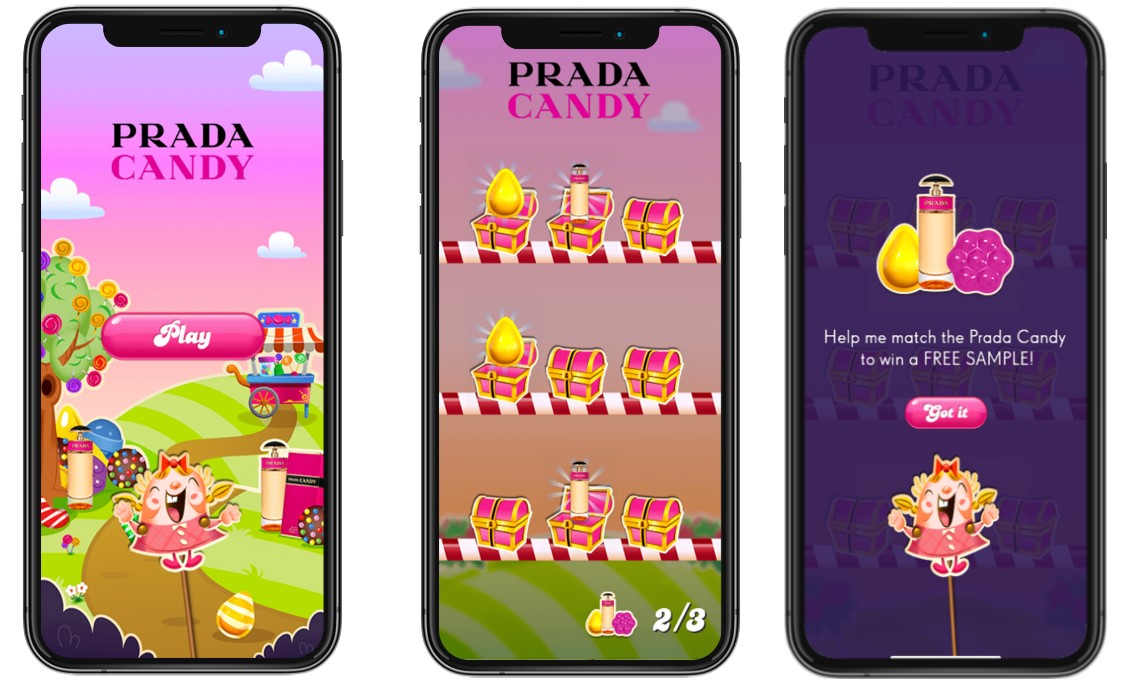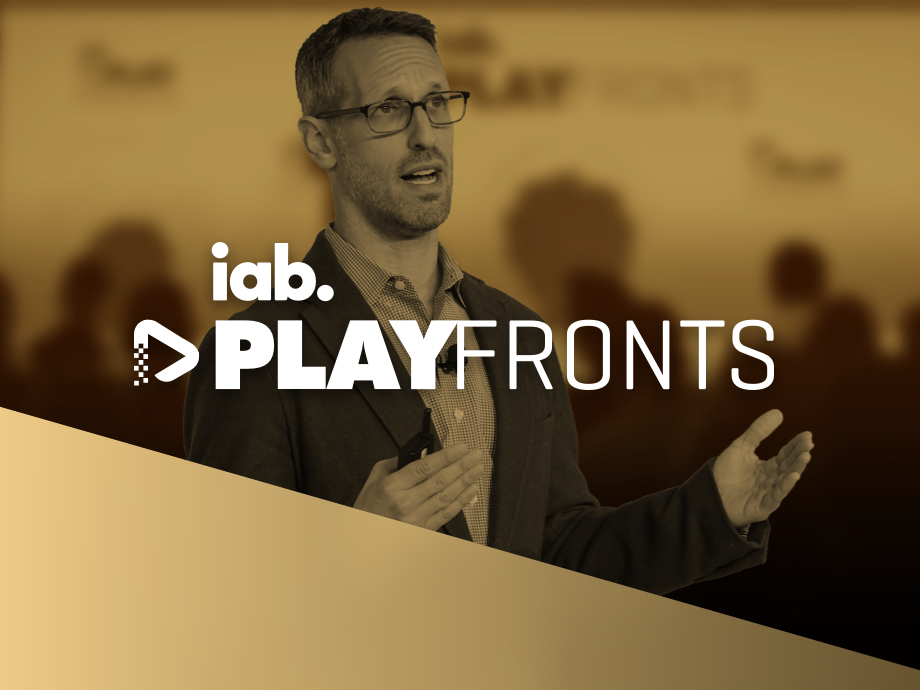con noi

Blog
Understanding Today’s Popular In-Game Advertising Formats
10 Minuti di lettura
Advertising formats and strategies are always adapting, driven to change by shifting media habits, channel trends, and measurement needs. Simultaneously, it’s become more important than ever for brands to understand the nuances of their target markets as they seek to reach them among increasingly fragmented audiences. In-game advertising is a natural ally to this end, as research has revealed that consumers of all ages, life stages, and interests can be found playing games.
The in-game advertising channel has established itself as a dynamic solution with engaging formats that capture the attention of players without disrupting their experience.
Brands looking to leverage the immense opportunities in gaming advertising should turn to three of the most popular in-game ad formats, consider custom partnerships, and know today’s best practices for creating successful in-game advertising campaigns.
What is In-Game Advertising?
In-game advertising places marketing messages within video games, appearing in various forms such as static, motion, interactive, or immersive. It can also take the form of brand integrations and custom partnerships structured around in-game events and occasions.
Done well, in-game advertising can reach players actively engaged in gameplay in a non-intrusive manner, and offer an experience that complements the game environment.
.gif)
In-game advertising can appear on any game platform—including PC and console—with mobile gaming being the most popular due to its easy access, supply of free ad-supported games, and synergy with shorter gaming sessions. Given that 64% of mobile players have been gaming on mobile for over five years, it's evident that mobile gaming is not just a temporary trend but a deeply ingrained aspect of the modern gaming landscape.
Some strategies include rewarded advertising—trading the player a meaningful in-game boon in exchange for their time and attention. Rewarded ads are both preferred by players, and more likely to be viewed in their entirety.
The Three Most Popular In-Game Ad Formats
In-game advertising offers brands unmatched opportunities to connect with highly engaged audiences. By leveraging the immersive nature of gaming, brands can integrate their messages in ways that enhance rather than disrupt the player experience.
Among the many types of ad formats, there are three that are most popular—Opt-In Video Ads, Non-Interruptive Digital Billboard Ads, and Interstitial Ads—each providing unique value and engagement opportunities for advertisers looking to reach players effectively.
.png)
1. Opt-In Video Ads
These ads are optional and typically offer rewards to players who choose to watch them. Rewards are a universally appreciated feature among gamers, making opt-in video ads an effective format that resonates across all player segments. Opt-in video ads can appear before a game starts, between levels, or during natural breaks in gameplay. The videos can be of varying length, but most brands find success between :06 - :90 seconds.
Opportunities:
Engages players who willingly participate, leading to positive reception.
High completion rates due to the incentive of rewards.
Effective across various player demographics and game types.
Keys to Success:
First impressions matter! Be sure to use enticing language and creative design that hooks players right away and invites them to opt-in.
Ensure the reward offered is perceived as valuable, as this significantly influences the success of the ad.
Best Practices: Ensure the reward is valuable and relevant to the player, keep the ad length short and engaging, and integrate seamlessly with the game’s theme and style. Ads should be skippable around the :30 second mark, but remain 100% opt-in. These are most preferred by players and still sport high completion rates.
2. Non-Interruptive Digital Billboard Ads

Game: Call of Duty: Mobile
Non-interruptive digital billboard ads are seamlessly integrated ads within the game environment, often appearing in realistic settings like sports stadiums or cityscapes. These ads enhance realism and maintain immersion without interrupting gameplay.
Opportunities:
Naturally integrated into the game environment.
Enhances player immersion and experience.
Boosts brand recall through repeated exposure.
Reaches hard-to-access, engaged audiences.
Allows for precise targeting using in-game data.
Keys to Success:
Ensure effective measurement by leveraging advanced analytics to track impact.
Maximize creativity within the game’s aesthetic to align with the environment.
Maintain immersion while experimenting with interactive techniques to boost engagement.
Rotate and refresh ads periodically to prevent ad fatigue and sustain player interest.
Best Practices: Place ads in high-traffic areas within the game, use eye-catching and relevant creative, and update content regularly to maintain player interest. When possible, take advantage of in-game interactions with the digital billboard ad that can further reward or excite players.
3. Interstitial Ads
Interstitial ads are full-screen ads that cover the entire game interface, usually appearing at natural transition points such as between levels or during a pause. They are forced ads of varying length, and can be static or video.
Opportunities:
Full-screen format makes ads highly attention-grabbing and ensures maximum visibility.
Flexible in length.
Effective at driving immediate interactions.
Keys to Success:
Manage player experience by considering moments for this type of ad placement, as these ads can be perceived as disruptive depending on the inventory.
Mitigate the risk of negative sentiment by ensuring the content is highly engaging and relevant to the player.
Avoid overuse to prevent player drop-off or abandonment, particularly by placing ads at natural transition points.
Best Practices: Use sparingly to avoid player frustration, ensure creative is engaging and relevant, and place ads at logical breakpoints in the game.
Custom Partnerships: The Future of In-Game Advertising
Custom partnerships represent a powerful strategy for brands to deepen their connection with players by integrating brands directly into the game’s narrative and environment. These bespoke collaborations create immersive and interactive experiences that go beyond traditional ads, offering unique opportunities for engagement and brand recall.
Brand Integration

Game: Candy Crush Saga
Brand Integration offers a unique opportunity for brands to seamlessly become a part of the gaming experience, embedding their message within the very fabric of the game. By collaborating closely with the publisher, brands can create integrations that enhance the narrative and resonate deeply with players.
A prime example of what strong collaboration can achieve is seen in the work done by Starcade Studios, Activision Blizzard Media’s in-house creative services team. With a background in game design and development, Starcade Studios has partnered with brands in entertainment, retail, consumer packaged goods, and more, to create custom, in-world experiences that feel like a natural extension of the game.
This approach ensures that brand messages are woven into the game’s DNA, providing heightened engagement without disrupting the player experience.
Custom Creative Design

Custom creative design often precedes brand integrations with tailored in-game content that feels seamless to both the game's audience and the brand's identity. Whether it's the development of branded characters, exclusive in-game items, or fully tailored interactive experiences, custom creative that is conceptualized from a campaign kick-off helps to form a deeper, more personalized connection with players.
Through strategic partnerships with brands like Prada Candy, Maybelline New York, and more, Starcade Studios has developed bespoke Playable content that not only enhances gameplay, but also aligns seamlessly with the brand’s objectives. This includes everything from exclusive in-game items that players value to interactive elements that enrich the gaming experience.
Player Preferences for In-Game Ads
The gaming audience is diverse, with varied preferences for in-game advertising. Highly engaged players who strongly identify with the gaming community respond best to ads from preferred gaming IPs. These players appreciate ads that align with their favorite games, enhancing their experience rather than disrupting it. When brands partner with beloved gaming IPs, they tap into this deep connection, resulting in positive brand perception and increased engagement.
But despite their diverse tastes, all players unilaterally prefer non-disruptive, rewarded ads. They are more receptive to ads that seamlessly integrate into the gaming environment without interrupting gameplay.
Understanding these preferences is critical. Players of all levels want ads that respect their engagement, offer value, and fit naturally into their gaming sessions. By catering to these desires, advertisers can create more effective and appreciated in-game advertising strategies.
3 Ways to Execute More Successful In-Game Advertising
Now knowing your audience, and understanding the breadth of ad formats available, here are a few ways to get more success for an in-game advertising campaign.
1. Choose the Right Game Partner
Select games that align with your target audience’s interests and demographics. For example, a mobile sports game or first-person shooter like Call of Duty: Mobile might be ideal for reaching a young male audience, while puzzle games like Candy Crush appeal to a broader demographic, including parents.
2. Optimize Creative for the Environment
Design ad creative that fits the platform’s unique requirements. For mobile games, this means developing short, engaging video ads or custom ad units that match the game’s look and feel. It can also mean clearly establishing a campaign’s key-performance indicators (KPIs) before investing in creative, so as to maximize return.
3. Use Non-Intrusive Ad Placements
Ensure that ads do not disrupt gameplay or interfere with the player’s progress. Rewarded opt-in video ads, which offer players something of value in exchange for viewing, are a prime example of a non-intrusive ad format.
Get the Most Out of Your In-Game Advertising Strategy
In-game advertising is a powerful tool for reaching a highly engaged audience in a dynamic and flexible way. By leveraging popular ad formats, brands can create mutually-beneficial ad experiences that resonate with players.
Custom partnerships and integrated branding offer even more opportunities for innovation and engagement. As media consumption habits continue to evolve, in-game advertising remains a critical strategy for connecting with audiences where they are most active and engaged.
About the Author
Brian Janelli is the Head of Design and Creative Director at Activision Blizzard Media. Specializing in the creation of dynamic ad experiences, Brian has a proven track record of designing high-impact, custom campaigns that resonate with audiences across platforms. Brian's work has earned global recognition, including accolades from the Mobile Excellence Awards, MMA Smarties, and The Drum. Before his current role, he led a global creative team at AdColony, where he collaborated with major brands across industries such as automotive, entertainment, and finance to develop groundbreaking advertising solutions.
Pubblicizza
con noi
Iniziamo dai contatti
LE NOVITÀ E CONTENUTI PIÙ RECENTI
Mobile Gaming: The Common Denominator Among All Game Players
In the increasingly diverse world of gaming, reaching unique, valuable audience segments offers a significant opportunity for brands and advertisers.
Why Multiplatform Players are More Receptive to Advertising
As the gaming industry continues to take its place in the entertainment ecosystem, understanding the different audience segments becomes increasingly critical for brands looking to tap into this lucrative market.
IAB PlayFronts 2024 Recap
The IAB PlayFronts 2024 marked a significant milestone in the digital entertainment sphere, bringing together industry innovators to share insights and chart the future of interactive media for the third year in a row.



.png)






